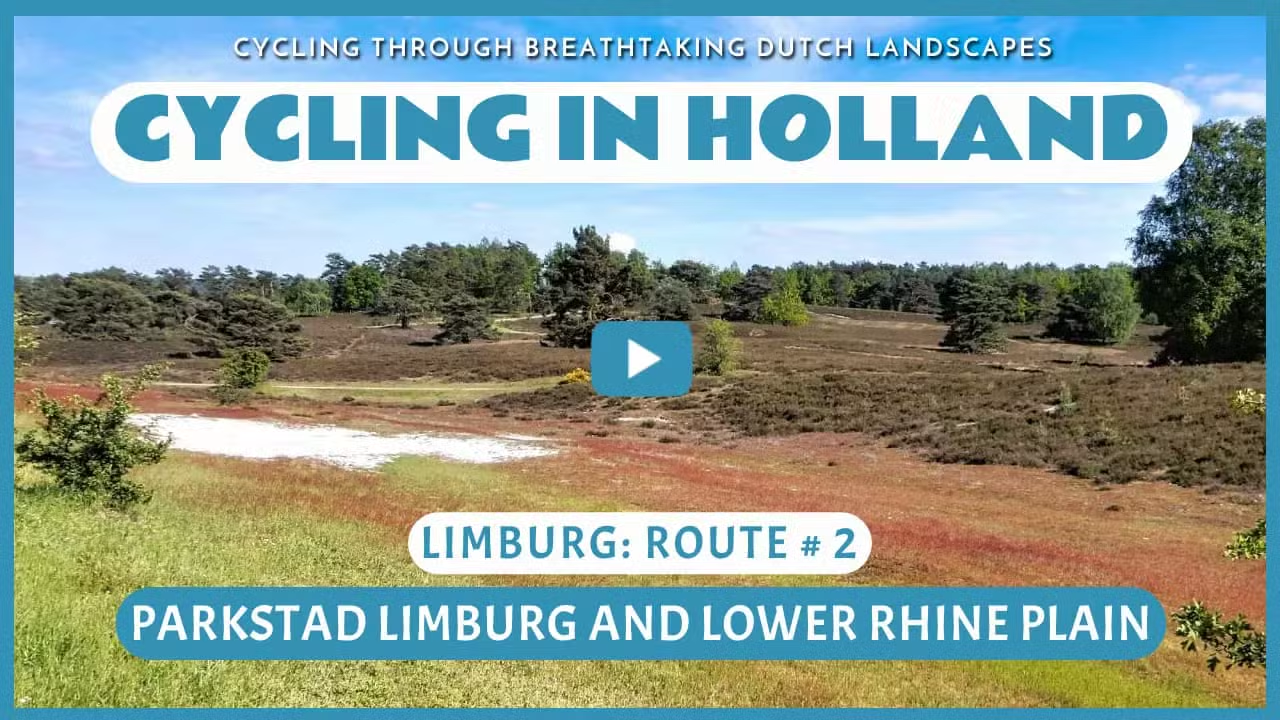Parkstad Limburg and Lower Rhine Plain
Cycling through a gently rolling landscape of heathlands, drifting sand dunes, fens, forests, marshes, stream valleys, and deep quarries.

The Landscape
Parkstad Limburg is a region full of contrasts and surprises. Where black coal once left the ground, a vibrant mosaic of green spaces, hills, stream valleys, and city parks now thrives. Centuries of farming, mining, and urban growth have shaped the landscape, but nature restoration and redevelopment have also left their mark. Around Heerlen, new nature areas are emerging that reflect a renewed connection between people and nature. City edges are transforming into flower-filled fields, orchards, and ecological corridors. One of the true gems is the Brunssummerheide, the largest continuous heathland in South Limburg, with rolling hills, quiet fens, drifting sands, and wide open views. It is a unique natural area on the border between city life and peaceful nature.
In the border region between Germany and the Netherlands, an open, gently rolling landscape unfolds, marking the southern edge of the Lower Rhine Plain. Here, the hills of South Limburg gradually give way to wide plains with expansive views. The landscape features fertile loess soils, vast fields, and gentle slopes that transition eastward into flat river terraces with gravel deposits. Narrow stream valleys with wet grasslands, reed beds, and poplar groves form a transition zone where nature, agriculture, and urban areas are closely intertwined. Old mining sites, gravel pits, and military zones alternate with new nature reserves, together creating an increasingly connected and cross-border network of green spaces.

Forests and Heaths

Estates and Heritage

Polders and Farmlands

Rivers and Streams
Route map
Start and finish near bike node 76 on the Schaapskooiweg in Heerlen. However, this bike route is a circular tour, so it offers the possibility to start from any of the following bike nodes.
76 - 77 - 78 - 47 - 45 - 11 - 44 - 43 - 38 - 42 - 35 - 36 - 61 - 62 - 63 - 64 - 2 - 3 - 57 - 51 - 30 - 62 - 61 - 33 - 74 - 35 - 76
- 82% of the route runs on paved roads.
- 18% of the route runs on unpaved and semi-paved paths.








